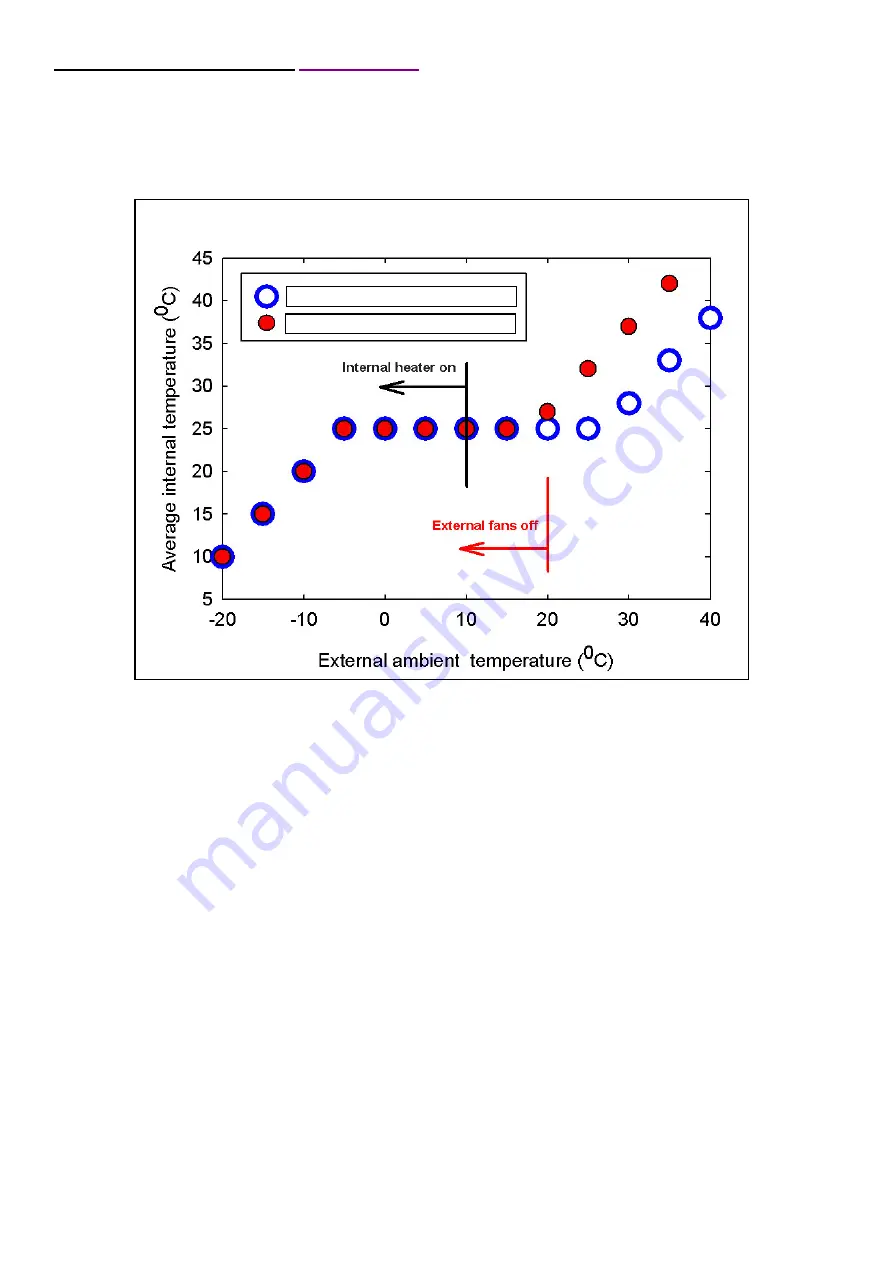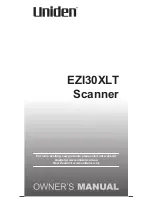
8. Typical thermal characteristics.
The graph below illustrates the expected averaged internal temperature versus the external ambient temperature for
the two different standard temperature specifications. The external ambient temperature is defined here as the
temperature of the air being drawn into the heat exchanger on the underside of the lidar. Depending upon the
characteristics of the ground, this may be hotter than the temperature as measured in the conventional way for
meteorological reporting.
Systems fitted with the Active or Extended temperature option.
The heat exchanger fans will be on all of the time, and soon after power is applied to the LiDAR. The cooling circuit is
not covered by the UPS unit, and will go off during a power cut. If the fans are not operating, and there is not a power
cut, then the fuse F2 may be blown. If fuse F-2 is not blown, then there may be a fault with the cooling unit, in which
case, the LiDAR should be powered down to avoid the risk of it over heating.
Passive temperature option.
The heat exchanger fans will be on when the internal ambient temperature goes above a set point, and off again when
cooled to 2
˚
C below this point.
If either system experiences an internal temperature of below 15
˚
C, then an internal heater will come on.
Thermal shutdown.
In the event of a cooling system failure, or high ambient temperatures (> 40
˚
C), the software may shut some parts of
the LiDAR down. Data collection will be paused while the system is in this thermal shutdown mode. A notice will be
displayed on the system information window, ‘
Thermal shutdown – waiting for the internal temperature to reduce
’, and
an event will be written to the system error log.
When the temperature is back to an acceptable level (normally 5
˚
C lower than shutdown temperature set point), then
the system will resume taking data as normal.
Passive temperature option
Active thermal control option


































